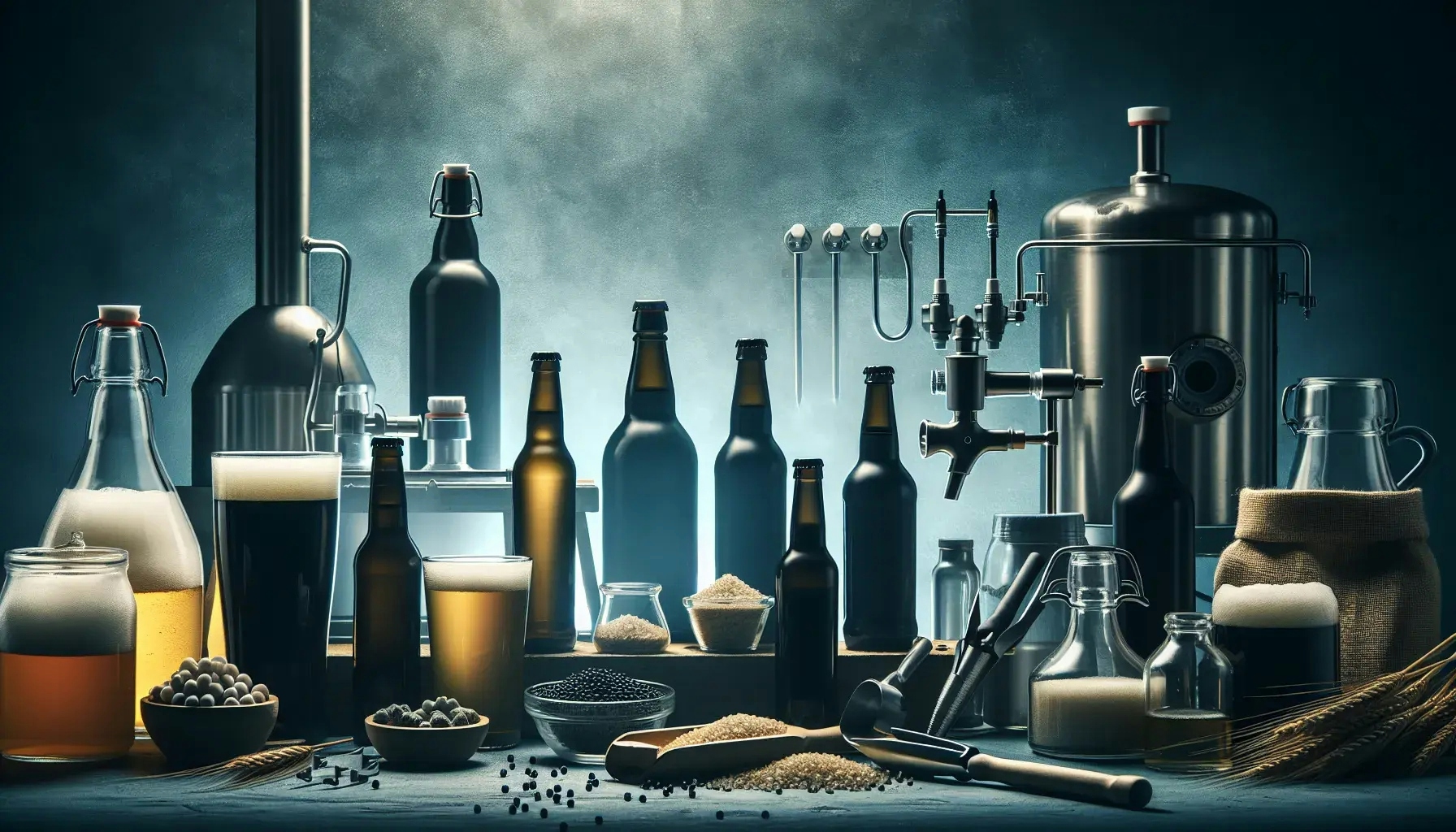Welcome to a deep dive into the world of non-alcoholic craft brews. This blog post will explore the rise of this intriguing trend, its origins, the reasons behind its popularity, and what the future holds. We'll also delve into the brewing process, the challenges faced by brewers, and the variety of flavors that these brews offer. So, let's embark on this journey together and discover the fascinating world of non-alcoholic craft brews.
The Origins of Non-Alcoholic Craft Brews
Non-alcoholic craft brews have a rich history that dates back to the Prohibition era. During this time, brewers had to get creative to stay in business. They started producing "near beers," which had an alcohol content of less than 0.5%. Fast forward to today, and we see a resurgence of these brews, but with a modern twist.
The craft beer industry has always been about innovation and pushing boundaries. Brewers are constantly experimenting with new ingredients, brewing techniques, and styles. The rise of non-alcoholic craft brews is a testament to this spirit of innovation. Brewers are now creating non-alcoholic versions of popular beer styles, such as IPAs, stouts, and lagers, that retain the flavor and complexity of their alcoholic counterparts.
The Popularity of Non-Alcoholic Craft Brews
The popularity of non-alcoholic craft brews is on the rise for several reasons. One of the main drivers is the growing trend towards healthier lifestyles. Many people are reducing their alcohol intake or abstaining altogether for health reasons. Non-alcoholic craft brews offer a way for these individuals to enjoy the taste of beer without the negative effects of alcohol.
Another factor contributing to the popularity of non-alcoholic craft brews is their inclusivity. They allow individuals who don't drink alcohol, whether for health, religious, or personal reasons, to participate in the craft beer culture. Non-alcoholic craft brews are also a great option for designated drivers, pregnant women, and anyone else who wants to enjoy a social occasion without consuming alcohol.
The Brewing Process of Non-Alcoholic Craft Brews
The brewing process of non-alcoholic craft brews is similar to that of regular beer, with one key difference: the removal of alcohol. There are several methods to achieve this, including vacuum distillation, reverse osmosis, and arrested fermentation.
Vacuum distillation involves heating the beer under a vacuum to lower the boiling point of alcohol, allowing it to evaporate without affecting the other components of the beer. Reverse osmosis works by forcing the beer through a semi-permeable membrane that separates the alcohol from the rest of the beer. Arrested fermentation involves stopping the fermentation process before the yeast has a chance to convert all the sugars into alcohol.
Each method has its pros and cons, and the choice depends on the brewer's preference and the style of beer being produced. Regardless of the method used, the goal is the same: to create a non-alcoholic beer that retains the flavor and complexity of its alcoholic counterpart.
The Challenges of Brewing Non-Alcoholic Craft Brews
Brewing non-alcoholic craft brews presents several challenges. The biggest challenge is creating a beer that tastes good without the alcohol. Alcohol contributes to the body, mouthfeel, and flavor of beer, and removing it can result in a beer that tastes thin and watery.
Another challenge is maintaining the quality and stability of the beer. Without alcohol, beer is more susceptible to spoilage and has a shorter shelf life. Brewers have to take extra precautions to ensure that their non-alcoholic brews are free from contaminants and are stored properly to maintain their freshness.
Despite these challenges, brewers are finding innovative ways to overcome them and produce non-alcoholic craft brews that are just as flavorful and satisfying as their alcoholic counterparts.
The Variety of Non-Alcoholic Craft Brews
One of the most exciting aspects of non-alcoholic craft brews is the variety of styles and flavors available. From hoppy IPAs to rich stouts to crisp lagers, there's a non-alcoholic craft brew for every palate.
Many brewers are also experimenting with unique ingredients and flavor combinations to create non-alcoholic brews that are truly one-of-a-kind. Ingredients such as fruits, spices, and even coffee are being used to add depth and complexity to these brews.
The variety of non-alcoholic craft brews is a testament to the creativity and innovation of the craft beer industry. It's an exciting time to be a beer lover, whether you drink alcohol or not.
The Future of Non-Alcoholic Craft Brews
The future of non-alcoholic craft brews looks promising. With the growing trend towards healthier lifestyles and the increasing demand for non-alcoholic beverages, the market for non-alcoholic craft brews is set to grow.
Brewers are continually innovating and pushing the boundaries of what's possible with non-alcoholic brews. As brewing techniques improve and the variety of styles and flavors expands, non-alcoholic craft brews are set to become a mainstay in the craft beer industry.
The rise of non-alcoholic craft brews is a testament to the versatility and adaptability of the craft beer industry. It's a trend that's here to stay, and we can't wait to see what the future holds.
The Exciting Journey of Non-Alcoholic Craft Brews
The rise of non-alcoholic craft brews is a fascinating journey that reflects the innovation and creativity of the craft beer industry. From their origins to their brewing process, their challenges, and the variety they offer, non-alcoholic craft brews have carved a niche for themselves in the beer world. As we look to the future, the growth and evolution of non-alcoholic craft brews promise to continue to captivate and delight beer lovers around the world.

